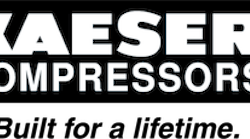Sponsored Content
Old vs. New Blower Technology for Aeration
Nov. 9, 2021
Related To: Kaeser Compressors Inc.
Sponsored Recommendations
Sponsored Recommendations
Chemical Plant Case Study
Aug. 14, 2024
Energy Efficient System Design for WWTPs
May 24, 2024
Directory
Kaeser Compressors Inc.
Sept. 16, 2019





